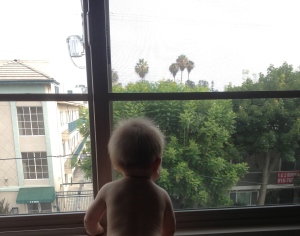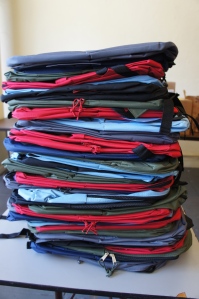
I really enjoyed reading the recent article that parenting expert, Dr. Laura Markham, shared about how to rethink Valentine’s Day with simple actions that create deeper connections with the people we love.
As a philanthroparent, her last idea really resonated:
“Love in Practice. If you’d like your kids to take pride in making the world a better place, Valentines Day is a great opportunity to express love for others by taking valentines goodies or homemade valentines to a nursing home, hospital, or soup kitchen.”
I’m always looking for ways to rethink our family activities and routines in ways that impact our social consciousness. Since this will likely be our daughter’s first Valentine’s Day that she will remember, why not use it as an opportunity to create a tradition of celebrating Valentine’s Day through a lens of social good?
These ideas are different types of purposeful gifting that I’ve been musing and intend to try over the years- with my daughter’s increasing input, of course. I share them here in hopes that they spark action in your household, too.
The Gift of Your Time. As a teacher, the phrase “use your time wisely” probably came up in my class more times than can be counted. Now that I think back on it, what does that even mean to an elementary-age student?! I’d like to repurpose that phrase for Valentine’s Day into “use your time lovingly.” This is something that is much more concrete for a child. They can think of ways to be loving, and they’re learning what it looks like to be kind. Dr. Markham goes into many examples in her article of how to do that with the ones you love. You can expand this concept to encompass acts of kindness for others in the community. I love this article about a father and daughter who did random acts of kindness for their birthdays. It gives some great launching points for Valentine’s Day, but the best and most beautiful may come from your child’s imagination.
The Un-gift. Add a positive spin to the phrase “in lieu of,” which can commonly be associated with donations (rather than flowers) in memory of someone’s passing. It also has shown up at celebrations, like weddings, where a couple decides to redirect funds usually spent on party favors towards a charity that resonates with them. So why not use “in lieu of” for smaller occasions, like Valentine’s Day? Rather than using store-bought valentines or creating elaborate ones, use the money saved to support an organization of your family’s choosing. Then, use what you already have at home to create a simple “in lieu of” card.
The Gift-It-Forward. I agree with Dr. Markham on this: Valentines Gifts are NEVER about the item or product. At the least, it is about the thought that goes into the gift. She argues that you need not even purchase a gift! But if you were to purchase a gift, could you find one that serves a need? How about donating a box of produce to a low income family of food pantry? For our daughter’s birthday, we worked with CommuniGift, where we asked our guests to support our “birthday buddy.” They could purchase a simple gift for a child in need online instead of adding to our own toy collection. If you’re hosting a Valentine’s Day party, the same concept could apply.
The Inside-Out Gift. Dr. Markham points out that sometimes we as parents may be “too busy, too broke, and maybe even too harried” to be able to make the most of this holiday with our families. Thankfully, her ideas call to attention that Valentine’s Day does not have to be elaborate or a reflection of our consumer prowess. Instead, it can be a time for reflection. It allows you to acknowledge and show gratitude for the people you love in your life. And if you’re a philanthroparent, showing kindness and compassion to others is an important part of your family values, too. If your circumstances do not allow you to look outward towards gifts, celebrations and date-nights this year, you can choose to look inward instead. This loving-kindness meditation is one way to do that. It’s guided practice in sending goodwill to others. This one is also a gift to yourself- besides being cost-free, it may help you to feel less harried.
 Simply put, carry this quote by Maya Angelou with you as you decide how to celebrate with your family this year: “I’ve learned that people will forget what you said, people will forget what you did, but people will never forget how you made them feel.” Amidst cards and gifts, what will be the lasting feeling that remains when the day is done? With these ideas for purposeful gifting, I hope you have a (social) good Valentine’s Day!
Simply put, carry this quote by Maya Angelou with you as you decide how to celebrate with your family this year: “I’ve learned that people will forget what you said, people will forget what you did, but people will never forget how you made them feel.” Amidst cards and gifts, what will be the lasting feeling that remains when the day is done? With these ideas for purposeful gifting, I hope you have a (social) good Valentine’s Day!









